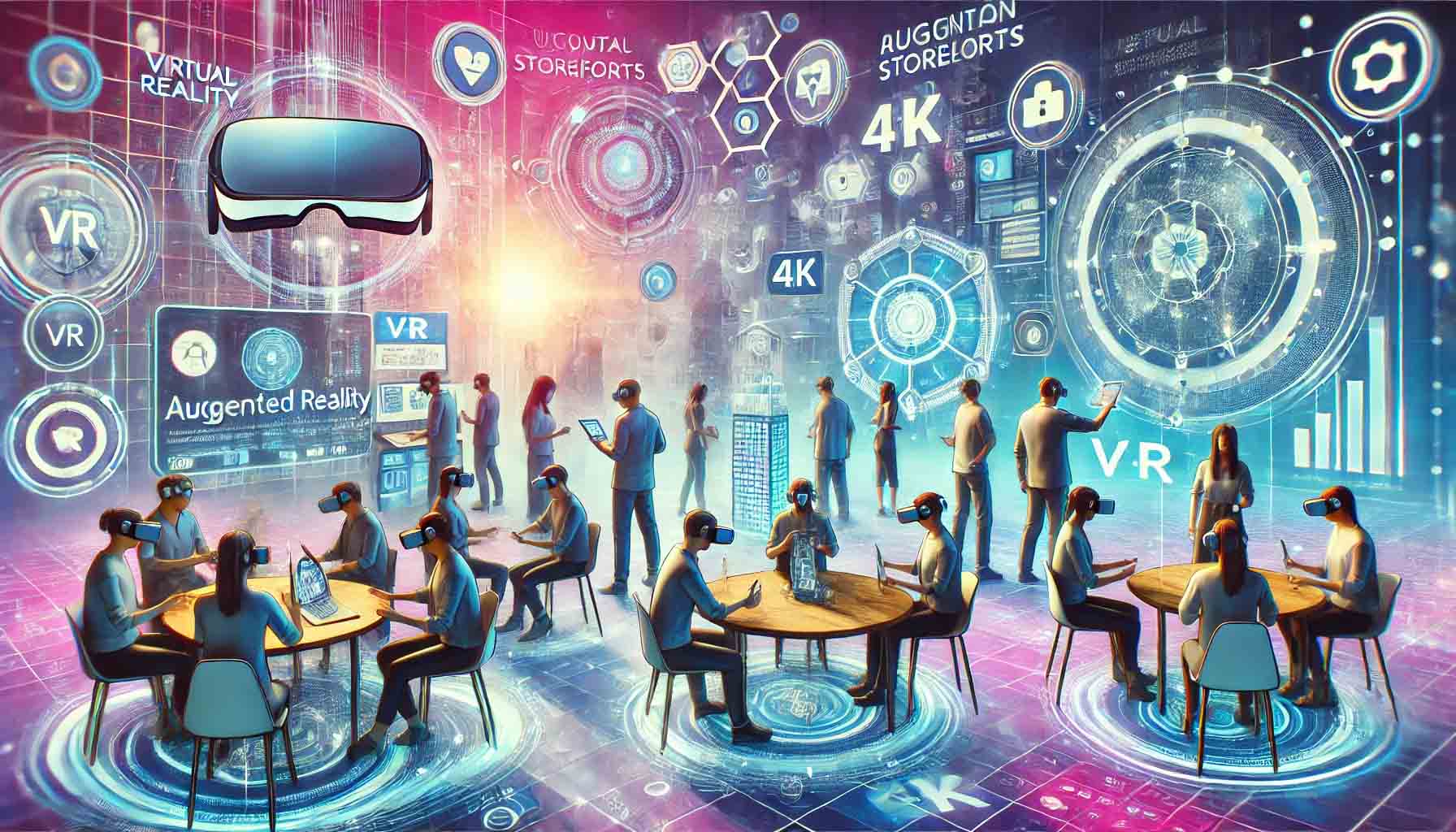
The concept of the metaverse, a collective virtual shared space created by the convergence of virtually enhanced physical reality and physically persistent virtual reality, has gained significant traction in recent years. It represents a digital universe where users can interact with a computer-generated environment and other users. Think of it as the internet brought to life or at least rendered in 3D. It comprises various elements, including virtual reality (VR), augmented reality (AR), and blockchain technologies, providing a fully immersive experience.
The metaverse is poised to revolutionize digital marketing by offering new and innovative ways for brands to engage with their audiences. As businesses strive to stay ahead of the curve, they are increasingly turning to the metaverse to create unique and immersive experiences that go beyond traditional marketing channels. According to a recent report by Gartner, by 2026, 25% of people will spend at least one hour a day in the metaverse for work, shopping, education, social, or entertainment purposes.
The objective of this article is to explore how brands are positioning themselves in these virtual worlds and creating immersive experiences that captivate and engage consumers. From virtual storefronts and events to digital assets and influencer partnerships, we’ll delve into the strategies that are defining the future of marketing in the metaverse.
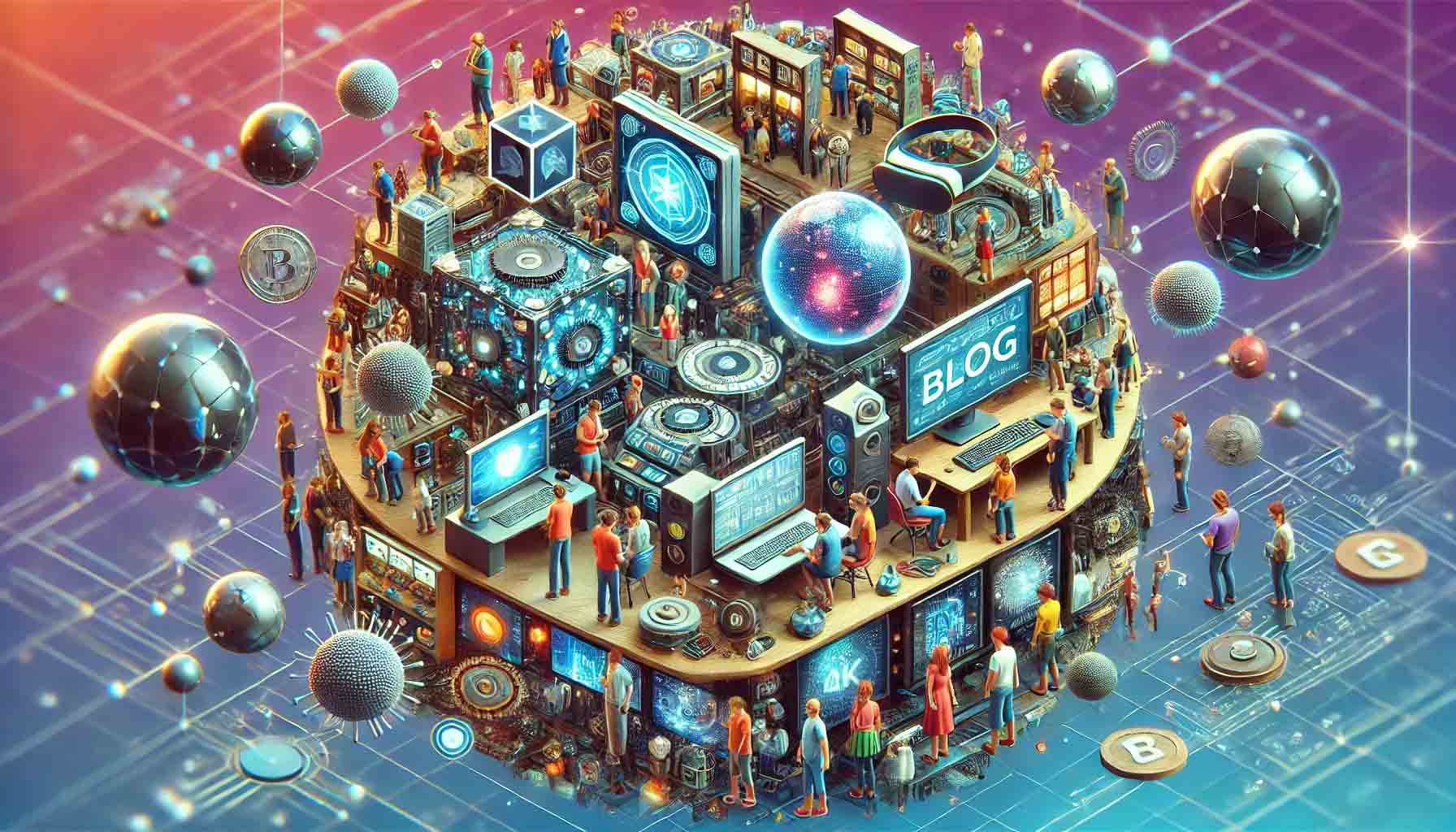
Understanding the Metaverse
The metaverse can be defined as a collective virtual shared space, created by the convergence of virtually enhanced physical reality and physically persistent virtual reality, including the sum of all virtual worlds, augmented reality, and the internet. It encompasses a range of technologies and platforms that enable immersive experiences, allowing users to interact with digital environments and each other in real-time.
Components of the Metaverse
Virtual Reality (VR): VR technology creates a fully immersive digital environment, often experienced through VR headsets like the Oculus Rift or HTC Vive. Users can interact with this environment through motion-tracked controllers and haptic feedback devices.
Augmented Reality (AR): AR overlays digital content onto the physical world, enhancing the user’s perception of reality. Devices such as Microsoft HoloLens and AR-enabled smartphones are common tools for experiencing AR.
Blockchain Technology: Blockchain ensures the security and authenticity of transactions within the metaverse, particularly for digital assets like NFTs (Non-Fungible Tokens). It provides a decentralized and transparent ledger, crucial for maintaining trust in virtual transactions.
Key Platforms and Technologies
- Decentraland: A virtual world where users can buy, develop, and trade virtual real estate using cryptocurrency.
- Roblox: A gaming platform that allows users to create and share experiences within its digital world, heavily focusing on user-generated content.
- Fortnite: Beyond a game, Fortnite offers virtual events and social experiences, like concerts and brand promotions, within its expansive digital universe.
The metaverse is evolving rapidly, integrating these technologies to offer seamless and interconnected virtual experiences. According to a study by Statista, the global AR and VR market is expected to reach $296.9 billion by 2024, underscoring the immense potential and growing interest in these immersive technologies.
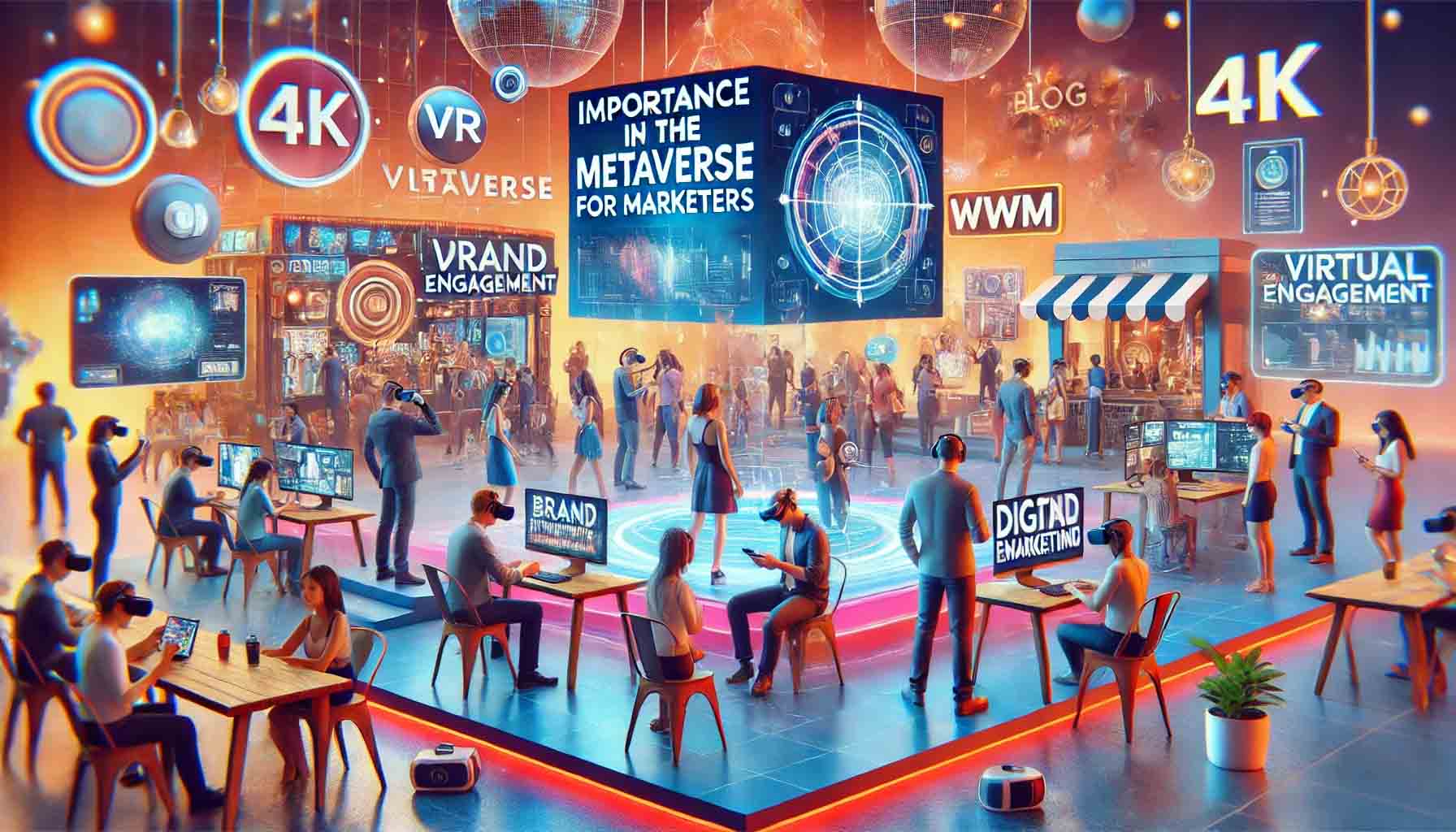
Why the Metaverse Matters for Marketers
The metaverse’s significance for marketers is undeniable as it continues to grow in popularity and user base. This virtual realm is attracting a diverse audience, with millions of users engaging in activities ranging from gaming and socializing to shopping and attending virtual events. According to Statista, the number of active VR users worldwide is expected to reach 171 million by 2028, highlighting the rapid growth and potential of this digital space.
The Growing Popularity and User Base of Virtual Worlds
Virtual worlds like Decentraland, Roblox, and Fortnite are seeing unprecedented user engagement. These platforms offer expansive digital environments where users can interact, explore, and participate in various activities. For instance, Roblox reported 199 million monthly active users in 2023, demonstrating the vast audience that brands can reach within these virtual spaces.
Unique Opportunities for Brand Engagement and Interaction
The metaverse presents unique opportunities for brands to engage with their audience in immersive and interactive ways. Traditional marketing strategies often involve one-way communication, but the metaverse enables two-way interactions, allowing consumers to experience brands firsthand. Virtual storefronts, branded events, and digital assets such as NFTs are just a few ways brands can create meaningful connections with their audience.
One notable example is Nike, which has created NIKELAND on Roblox, allowing users to participate in virtual sports games and purchase digital Nike apparel for their avatars. This not only enhances brand visibility but also fosters a sense of community and loyalty among users.
The Shift from Traditional to Experiential Marketing
As the digital landscape evolves, there is a significant shift from traditional to experiential marketing. The metaverse offers an ideal platform for experiential marketing by providing immersive experiences that resonate with consumers on a deeper level. Brands can host virtual events, launch products in a dynamic digital environment, and even create interactive storytelling experiences that capture the audience’s imagination.
A case in point is Coca-Cola, which launched its first-ever NFT collection to celebrate International Friendship Day. This campaign included a virtual event in the Decentraland metaverse, where users could participate in activities and win exclusive digital collectibles. Such initiatives highlight the potential of the metaverse to create memorable and impactful brand experiences.
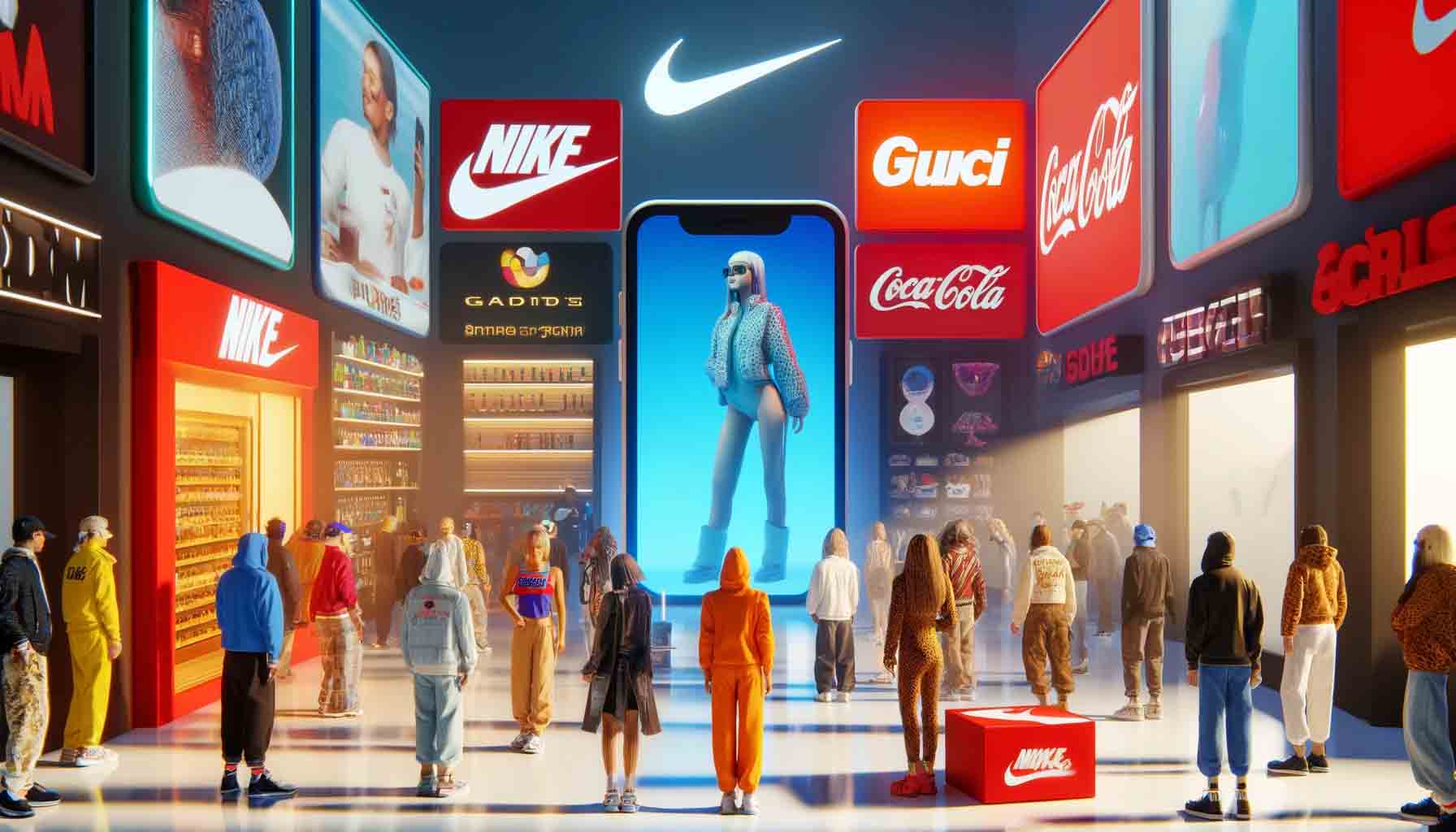
Case Studies of Brands in the Metaverse
Nike: Creating Virtual Stores and Exclusive Digital Products
Nike has been at the forefront of leveraging the metaverse to enhance its brand presence. In Roblox, Nike created “NIKELAND,” a virtual space where users can participate in sports activities and games, reflecting the brand’s athletic ethos. Users can dress their avatars in exclusive digital Nike apparel, merging virtual and physical brand experiences. This initiative not only enhances brand visibility but also fosters a community of loyal users who engage with the brand in a fun and immersive way. According to Roblox, NIKELAND has attracted millions of visitors since its launch, demonstrating the significant potential of virtual brand engagement.
Gucci: Virtual Fashion Shows and Limited-Edition Virtual Items
Gucci has embraced the metaverse by hosting virtual fashion shows and offering limited-edition virtual items. One notable example is the “Gucci Garden” experience on Roblox, which allowed users to explore a digital exhibition and purchase exclusive virtual items for their avatars. This innovative approach not only showcased Gucci’s creativity but also provided a unique platform for users to interact with the brand. The limited-edition virtual items sold out quickly, highlighting the growing demand for digital fashion. This venture not only expands Gucci’s reach to a younger, tech-savvy audience but also sets a precedent for luxury brands in the digital space.
Coca-Cola: Interactive Virtual Events and Collectible NFTs
Coca-Cola has ventured into the metaverse by hosting interactive virtual events and releasing collectible NFTs. To celebrate International Friendship Day, Coca-Cola launched a campaign in Decentraland, a decentralized virtual world. The campaign included a virtual event where users could participate in activities and win exclusive Coca-Cola branded NFTs, such as virtual wearables and digital artwork. This strategy not only created a buzz around the brand but also introduced a novel way for consumers to engage with Coca-Cola. The campaign was a success, with the NFTs fetching high prices on the secondary market, demonstrating the potential of combining virtual events with digital collectibles.
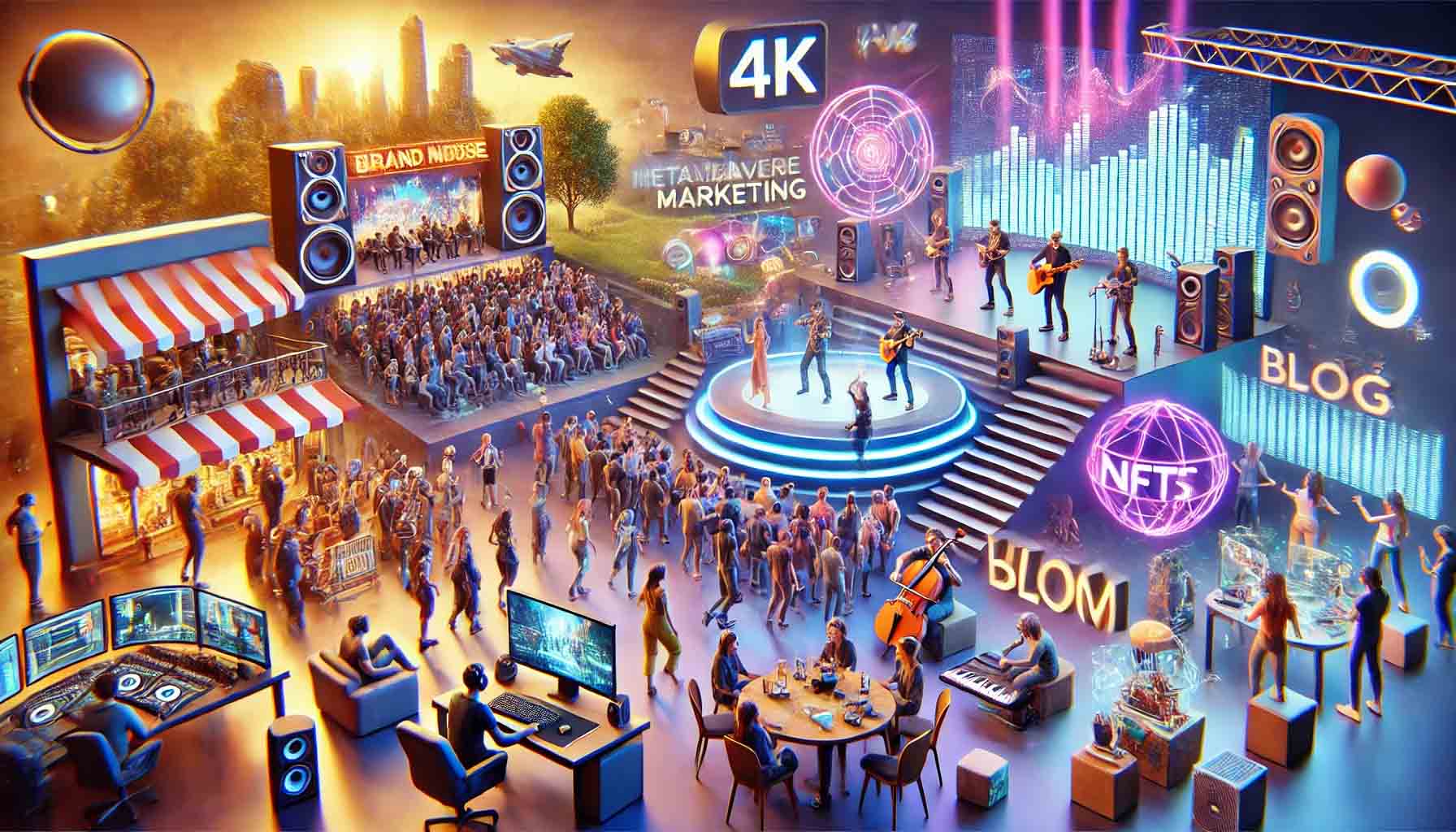
Strategies for Successful Metaverse Marketing
Building Virtual Spaces
Creating immersive brand environments in the metaverse allows businesses to engage consumers in unique and interactive ways. Virtual spaces such as stores, showrooms, and event venues provide a platform for brands to showcase their products and services innovatively.
- Virtual Stores and Showrooms: Brands like Nike and IKEA have established virtual stores where customers can explore products in a 3D environment. These spaces often feature interactive elements, such as product demonstrations and customization options, enhancing the shopping experience.
- Event Spaces: Companies can host product launches, conferences, and social events in virtual venues, offering attendees an immersive experience. For instance, Samsung’s virtual event space for product launches allows users to interact with new devices in a simulated environment.
Engaging Through Virtual Events
Hosting virtual events is a powerful strategy for engaging with a global audience in real-time. These events can range from concerts and fashion shows to product launches and brand experiences.
- Virtual Concerts and Fashion Shows: Artists and brands are increasingly turning to virtual platforms to reach wider audiences. For example, Travis Scott’s virtual concert in Fortnite attracted over 27 million viewers, while Gucci’s virtual fashion show in Roblox allowed users to purchase limited-edition virtual items.
- Product Launches: Virtual product launches offer an interactive and engaging way to introduce new products. Companies can create immersive experiences where users can explore new products, watch live demonstrations, and participate in Q&A sessions.
Leveraging Digital Assets
Digital assets, particularly NFTs (Non-Fungible Tokens), play a significant role in metaverse marketing by offering unique and valuable digital items that enhance brand engagement.
- Role of NFTs in Brand Promotion: NFTs provide a way for brands to create exclusive digital items that can be collected, traded, and showcased by consumers. For instance, Coca-Cola’s Friendship Day campaign featured NFTs that users could win through virtual activities.
- Creating and Selling Unique Digital Items: Brands can develop limited-edition digital products, such as virtual apparel, accessories, and artwork. These items can be sold or given away as part of marketing campaigns, creating a sense of exclusivity and excitement among consumers.
Collaborations with Virtual Influencers
Partnering with virtual influencers can significantly boost brand visibility and consumer trust. Virtual influencers are computer-generated characters with large social media followings and the ability to engage with audiences authentically.
- Partnering with Virtual Celebrities: Brands can collaborate with popular virtual influencers to promote products and services. For example, digital fashion brand The Fabricant partnered with virtual influencer Lil Miquela to showcase their virtual clothing line.
- Impact on Brand Visibility and Consumer Trust: Virtual influencers can create relatable and engaging content that resonates with audiences, enhancing brand perception and trust. Their unique appeal and digital-native presence make them effective partners for reaching tech-savvy consumers.
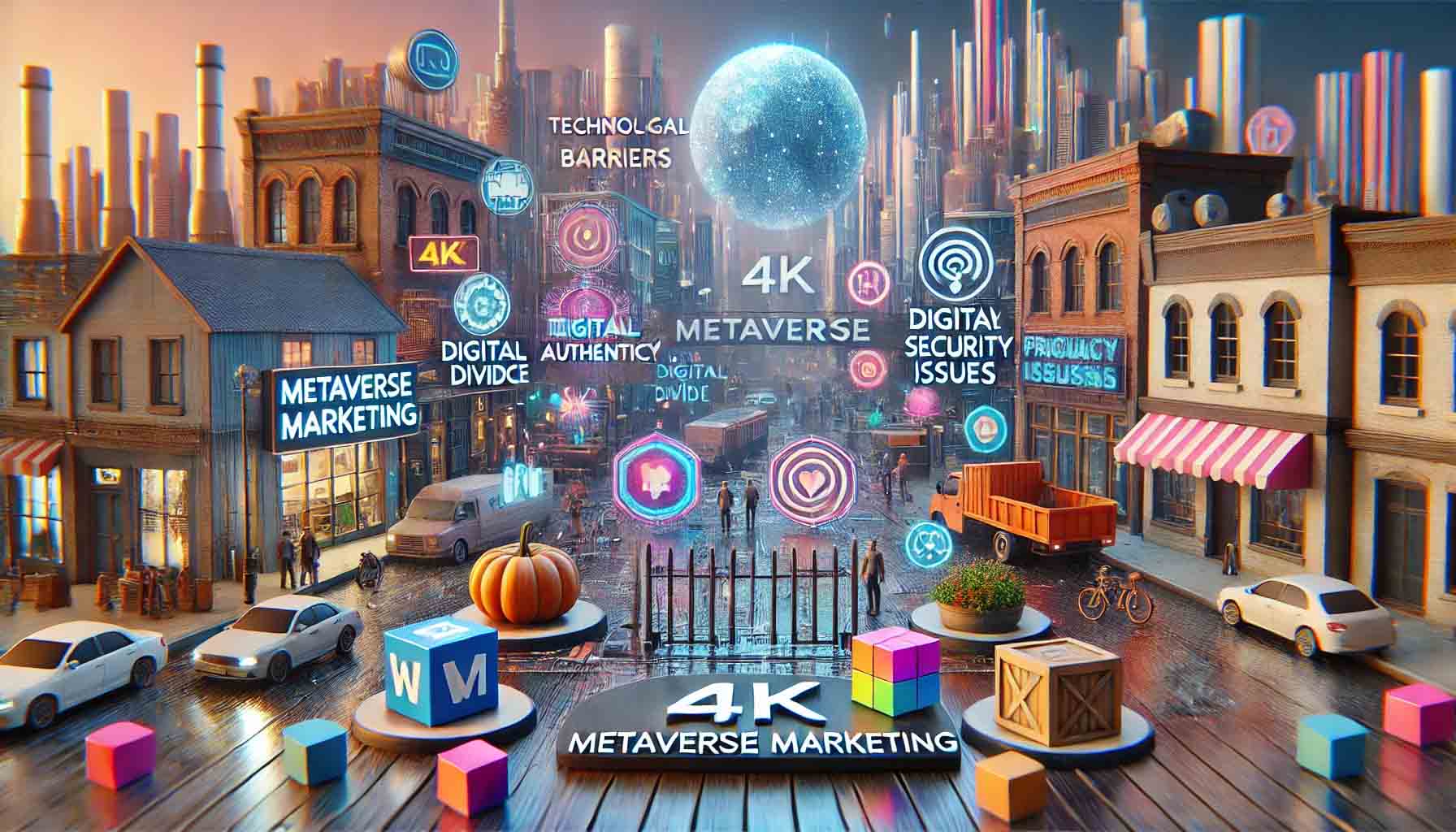
Challenges and Considerations
Technological Barriers and the Digital Divide
One of the primary challenges in metaverse marketing is the technological barriers that still exist. While the metaverse promises immersive and interactive experiences, access to these technologies is not universal. High-quality VR headsets, fast internet connections, and advanced computing power are necessary to fully participate in the metaverse. According to Pew Research, around 24% of Americans do not have access to broadband internet, highlighting a significant digital divide. Brands must consider these limitations when designing their metaverse strategies to ensure inclusivity and accessibility.
Ensuring Authenticity and Avoiding Gimmicks
In the rush to enter the metaverse, there is a risk that some brands may prioritize novelty over authenticity. Consumers are increasingly savvy and can easily distinguish between genuine engagement and marketing gimmicks. For brands to succeed, they need to create meaningful and relevant experiences that resonate with their audience. This means understanding the unique culture of the metaverse and integrating into it in a way that feels organic and sincere. A study by Accenture found that 62% of consumers expect companies to take a stand on current and broadly relevant issues, reflecting the importance of authenticity.
Privacy and Security Concerns in Virtual Environments
As with any digital platform, the metaverse comes with its own set of privacy and security challenges. The immersive nature of the metaverse means that vast amounts of personal data can be collected, from biometric data to behavioral patterns. Ensuring the security of this data is paramount to maintaining consumer trust. According to a report by Norton, 73% of Americans are concerned about their privacy online. Brands must implement robust security measures and be transparent about how they collect, use, and protect consumer data to mitigate these concerns.
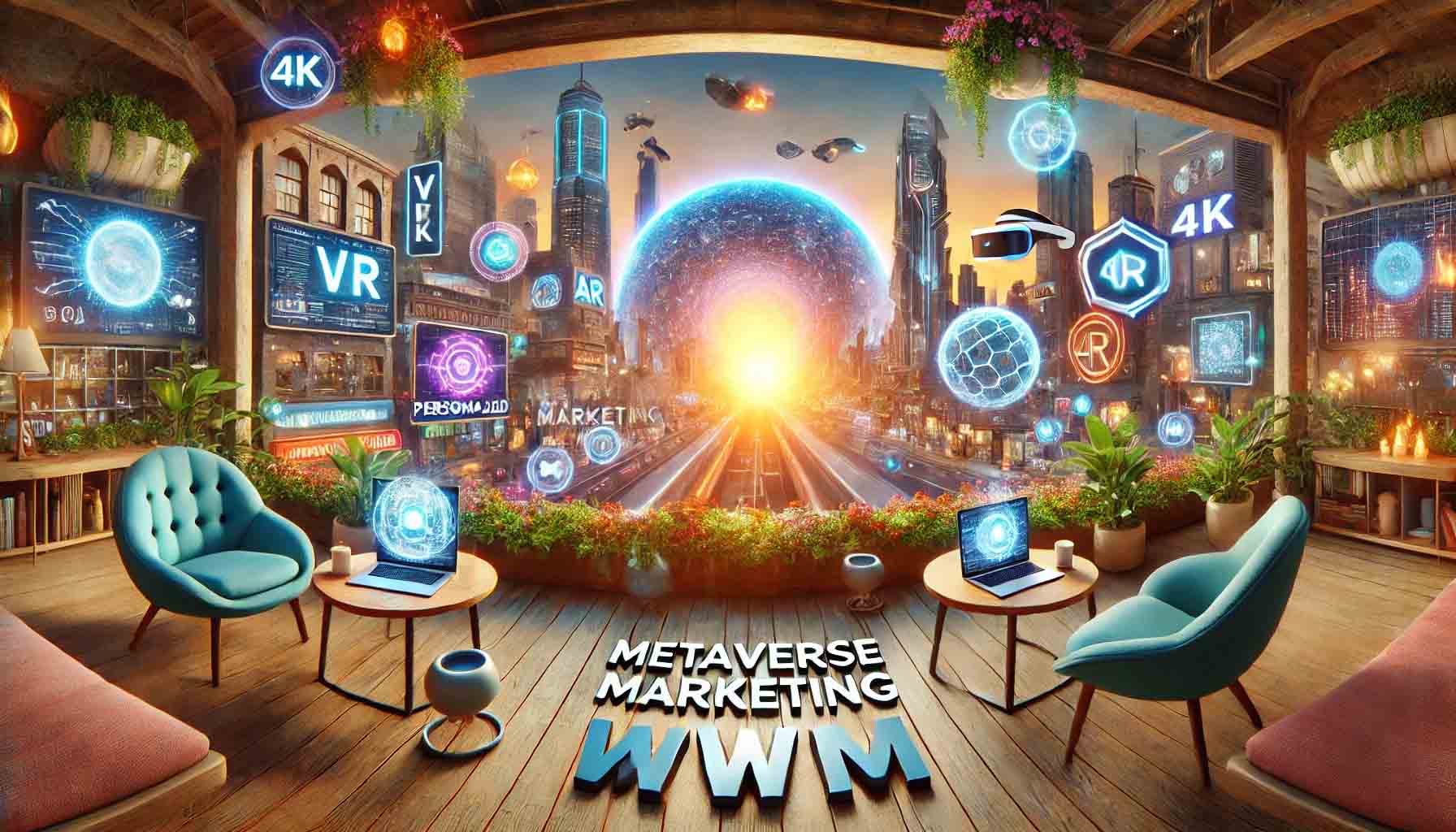
Future Trends in Metaverse Marketing
The Evolution of User Experiences and Expectations
As technology continues to advance, user experiences in the metaverse are expected to become even more immersive and interactive. The integration of haptic feedback, advanced VR headsets, and augmented reality glasses will enhance the sensory experience, making virtual interactions feel more real. Users will expect seamless and engaging environments where they can interact with brands in novel ways. For example, companies like Meta are already working on haptic gloves that simulate the sense of touch, adding a new dimension to virtual experiences. According to a report by Mordor Intelligence, the global VR market is projected to grow at a CAGR of 27.9% from 2021 to 2026, indicating significant advancements in this space.
Integration of AI and Machine Learning for Personalized Marketing
Artificial intelligence (AI) and machine learning (ML) are set to play a crucial role in the future of metaverse marketing. These technologies will enable brands to deliver highly personalized experiences to users based on their preferences and behaviors. AI-driven avatars, personalized content recommendations, and interactive chatbots will enhance user engagement and satisfaction. For instance, AI can analyze user data to create tailored virtual shopping experiences, suggesting products that match individual tastes. According to a survey by PwC, 72% of business leaders believe that AI will be the business advantage of the future, highlighting its potential in marketing strategies.
The Potential of Cross-Platform Interoperability
Cross-platform interoperability will be a key trend in the metaverse, allowing users to move seamlessly between different virtual environments. This will enable brands to create cohesive and consistent experiences across various platforms. For example, a user could attend a virtual concert in one platform and then continue interacting with the brand in a different virtual shopping environment without losing their progress or identity. The development of standards and protocols for interoperability will be essential to achieve this vision. According to a report by Gartner, 75% of enterprises will shift from piloting to operationalizing AI by 2024, emphasizing the importance of cross-platform capabilities in the future of digital interactions.
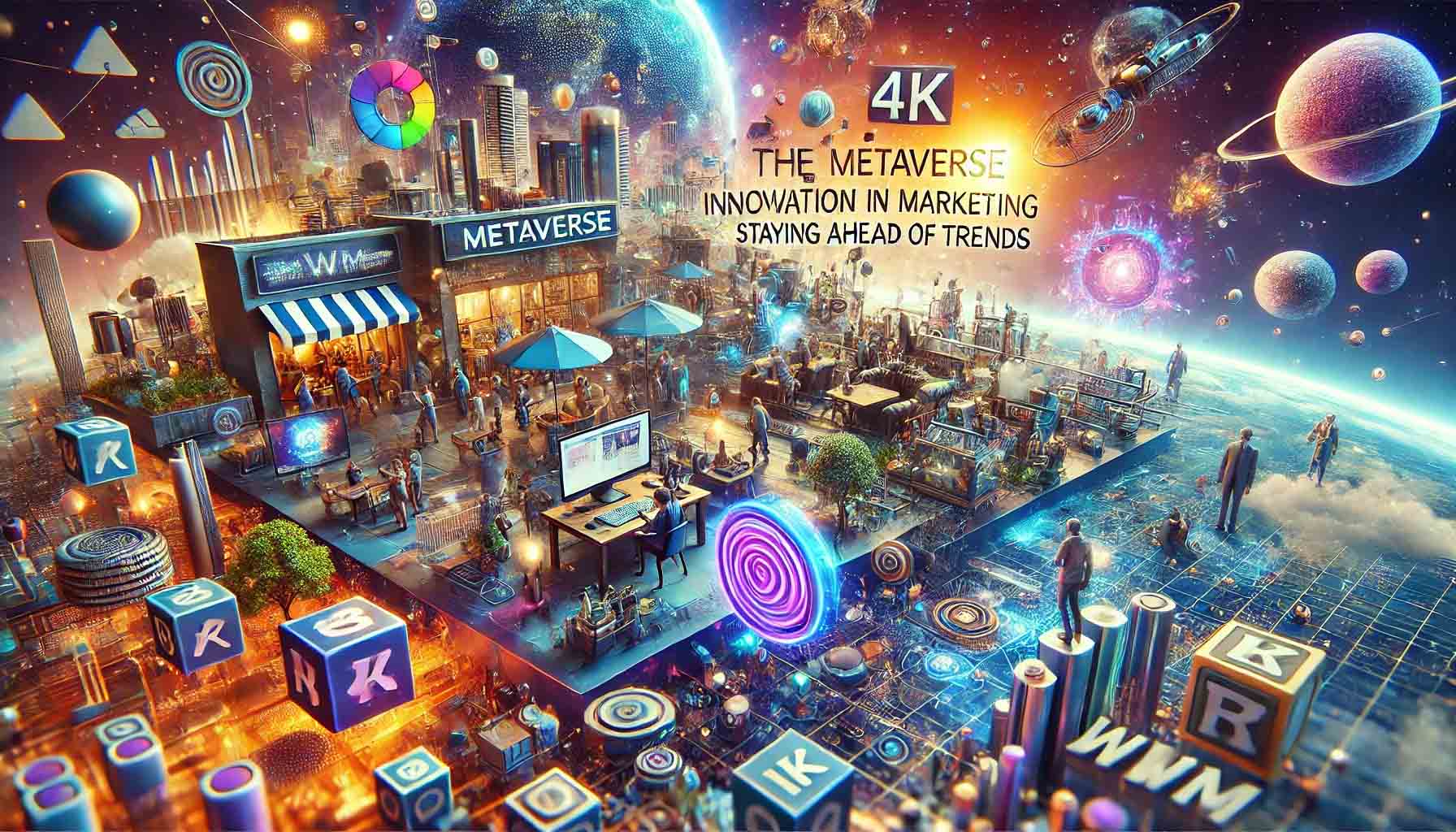
Conclusion
The metaverse has undeniably opened new horizons in the marketing landscape, providing innovative and immersive ways for brands to connect with their audiences. By creating virtual spaces, hosting engaging events, leveraging digital assets, and collaborating with virtual influencers, brands are crafting unique experiences that go beyond traditional marketing channels. The potential impact of the metaverse on marketing is vast, with the ability to reach and engage users in unprecedented ways.
Brands are encouraged to explore and innovate within these virtual worlds, as the early adoption and experimentation in the metaverse can lead to significant competitive advantages. The integration of advanced technologies such as AI and VR, along with a focus on authenticity and user experience, will be key to staying ahead of the curve in this dynamic environment.
Staying ahead in metaverse marketing requires a forward-thinking approach, a willingness to embrace new technologies, and a commitment to creating genuine and impactful experiences for consumers. As the metaverse continues to evolve, the brands that adapt and innovate will be the ones that truly stand out and thrive in this new digital frontier.
As we delve deeper into the exciting realm of metaverse marketing, your insights and experiences become invaluable. We invite you to share your thoughts on how brands are leveraging virtual worlds and creating immersive experiences. Have you encountered innovative marketing strategies in the metaverse? What stood out to you?
Engage with us in the comments section and join the conversation. Your feedback helps us explore diverse perspectives and enhances our understanding of this rapidly evolving field.
Stay ahead of the curve by subscribing to our blog for the latest updates on digital marketing trends, including cutting-edge strategies and success stories from the metaverse. Our subscription ensures you never miss an update, keeping you informed and inspired.

